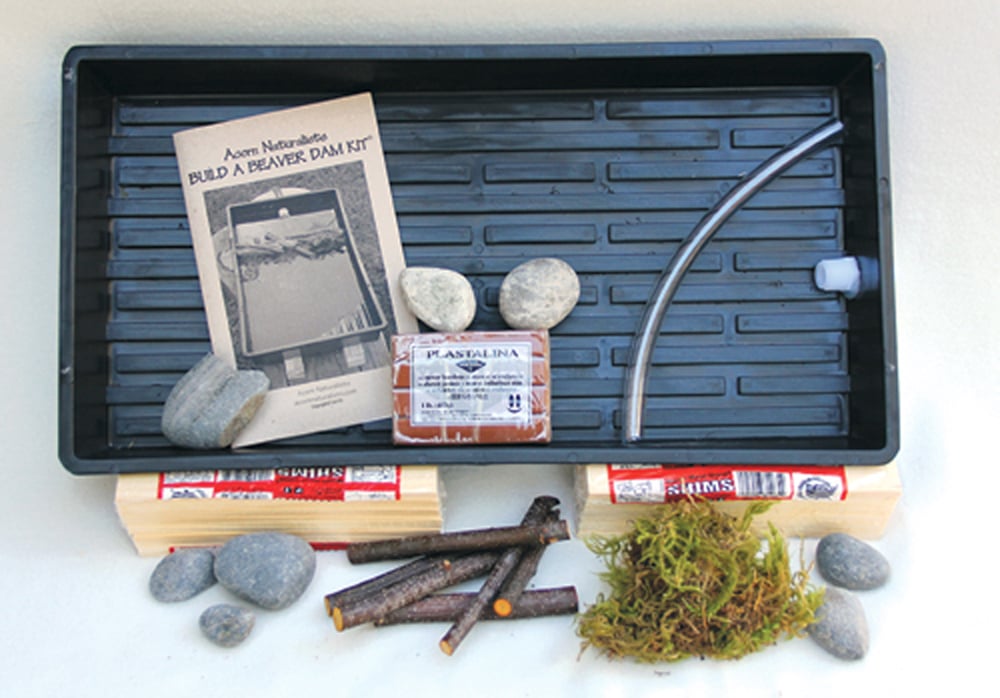

Build a Beaver Dam® Model Kit
We apologize; this item is no longer available.
|
Beavers have long used STEM (Science, Technology, Engineering, and Math) to build their amazing dams. There is a major difference between human built dams and beaver dams - beaver dams are better designed for wildlife. This kit contains everything needed to design and replicate a working beaver dam. The challenge is to build one that is “leaky” yet retains enough water to form a pond. Kit includes a waterproof 1' x 2' tray, wooden block for changing the angle of flow in the tray, smooth stream pebbles (beaver move rocks to the base of their dams), a selection of birch twigs in a cloth bag, plastine brown clay ("beaver mud” for packing the dam), and an activity booklet with complete directions and suggestions for supplementary STEM activities. Recommended for ages 8 and up, with adult supervision. The activities in this kit address the Next Generation Science Standards, specifically LS2.C Ecosystem Dynamics, LS4.C Adaptations, ESS2.E Biogeology, and ETS1 Engineering Design in grades 3-5 and middle school. Introduction (from the activity booklet that comes with this kit): Beaver are large aquatic rodents known for their ability to construct dams and lodges in creeks and ponds throughout North America. As animal architects, they use their woodworking and engineering skills to manipulate the environment to best meet their needs. This kit explores their creative engineering through hands-on construction and evaluation of a classic beaver signature: the beaver dam. Like humans, beaver have long used STEM (Science, Technology, Engineering, and Math) to build their amazing water retention structures. There is, however, a major difference between human built dams and beaver dams. Beaver dams generally have a higher wildlife value since they accommodate multiple species. Salmon find ways through their “leaky” dams and young fish ply the placid waters behind them. The challenge presented in this kit is to engineer a dam that is “leaky” so that downstream animals are not affected, and yet capable of retaining enough water to create a pond that is suitable for a lodge. The activities in this kit address the Next Generation Science Standards, specifically LS2.C Ecosystem Dynamics, LS4.C Adaptations, ESS2.E Biogeology, and ETS1 Engineering Design in grades 3-5 and middle school. Kit includes a waterproof, heavy-duty tray fitted with a drain and flexible water tube, 24 wood shims for changing the angle of the tray (to alter water flow and retention dynamics), and a collection of smooth rocks, twigs, moss, and clay. The following items are not included: two buckets (1-3 gallon size), a measuring cup or beaker, and a cell phone or stopwatch for keeping track of time. |